- Custom Homes
- Complete Home Makeovers
- Home Additions
- Commercial Properties
- Testimonials
- FAQ
- Links/Resources
Address:
Deer Hill Architects LLC
40 Lowell Street, Peabody
Massachusetts 01960
Phone:
978-532-8660
Commercial Properties
Bank Branch
Town Offices
Retail
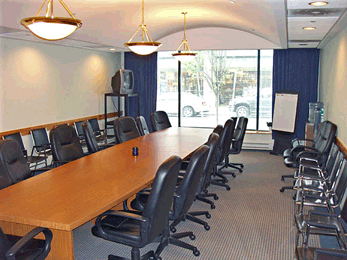
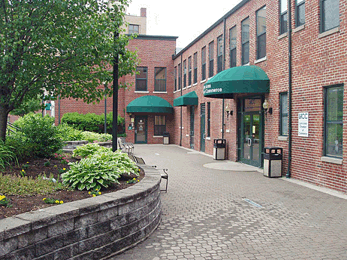
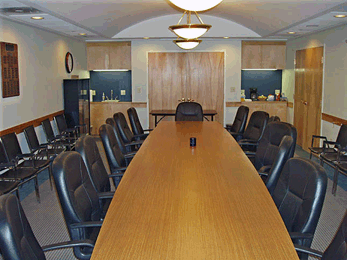
Making the Most of Downtown
Lynn, MA
This ambitious project to renovate almost a full block of downtown Lynn is being done in phases. Phase 1 consisted of the complete renovation of approximately 23,000 s.f of retail and office space in both the 2 story Belkin Building and the 2 story Tolman Building on Munroe Street.
Phase 2 consisted of the gut rehab of the Sherry Building, a 5 story brick building of approximately 35,000 s.f. housing 19 residential condos on the upper floors and 4 retail condos on the ground level. This was one of the first projects to use a new zoning ordinance to allow residential units on the upper level of downtown buildings within a certain distance of the MBTA train station.
Phase 3 consists of a 57,500 five story new building currently under development.
In all three phases the challenge was to create a building that was both welcoming from the Munroe Street, but also from the parking lot located in the rear of the buildings. To complicate matters, there is about a 4 foot grade change from the front of the building to the rear. In the case of the Tolman building, the solution was a “through” lobby, connecting the front of the building with the rear. A beautifully landscaped patio was set at the lower level of the rear, with a small flight of stairs and ramp that lead up to the parking lot.
For the Sherry Building, the problem was solved by creating two lobbies. The Munroe Street lobby serves the commercial condos. The residential lobby is set at the parking lot height, where parking spaces are deeded to the residential condominiums.
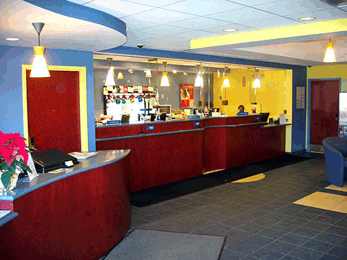
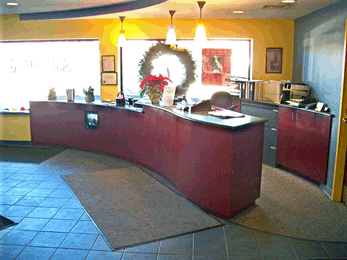
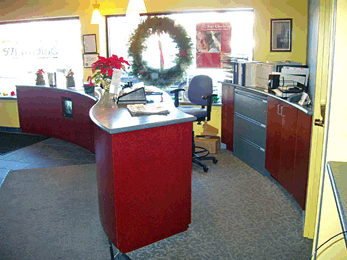
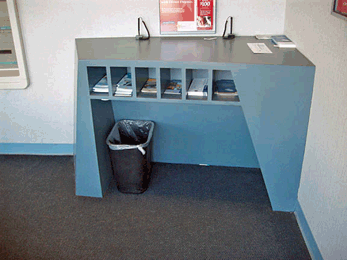
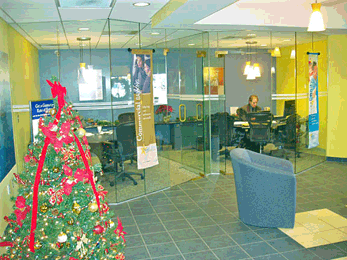
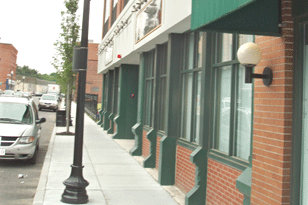
Bank Branch Highlights
“Dignified Fun”
Lynn, MA
The management of Salem 5 had a new of vision for the branch office they wanted to open on State Street. While maintaining the proper “dignity” of the bank aesthetic, they wanted to do something more lively and fun than the traditional bank ambiance. We responded by using traditional and modern materials in a playful mixture that created an elegant and uniquely interesting office which was an instant hit with their customers.
Using traditional materials found in many banks such as cherry millwork, we created curved and flowing cabinetry that mimicked free flowing soffits and playful flooring patterns. The “traditional” offices are given a new twist with full glass walls set at angles that help to define the shape of the lobby itself. Colorful floor tile patterns, whimsical light fixtures, and non-geometric cabinetry help accent the “fun” character of this office for a profession usually defined by their staidness.
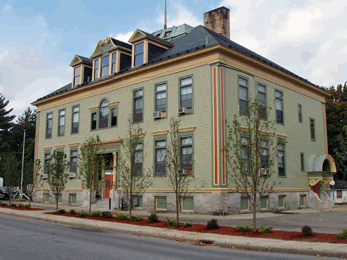
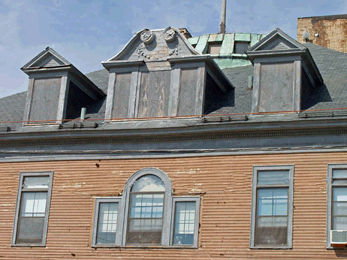
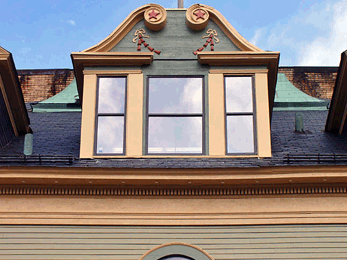
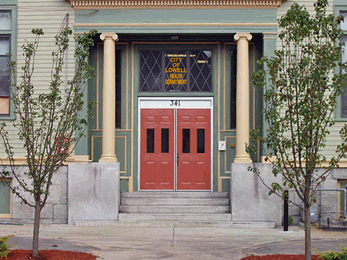
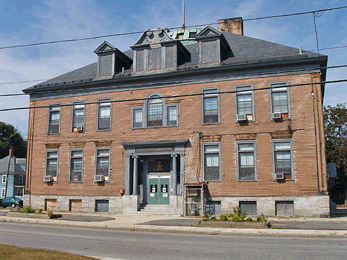
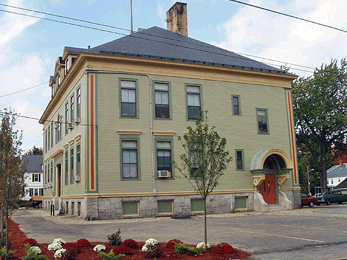
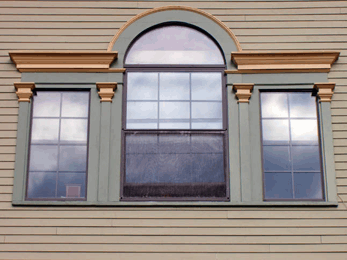
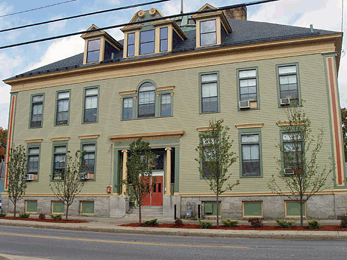
Historic School’s Return to Glory
Lowell, MA
The Brady School is an historic structure in Lowell that served as a neighborhood school for many years, but recently became the home of the City of Lowell Health Department. Some decades ago, the city had decided to remove almost all of the historic trim on the building, and to reside the building in asbestos shingles.
Deer Hill architects was assigned the task of restoring the exterior of the building. The neighborhood civic groups wanted the building to look as close to the original as possible. The Department of Public Works wanted the building to be as maintenance free as possible. Both groups wanted to realize the project in the most affordable way possible.
The first step was a careful analysis of the existing conditions. We needed to determine what remained of the original trim and siding, what could be reused, and more difficultly, what was missing altogether. After careful examination, it became clear that the little original trim that remained was in very bad shape, and that most of it would need to be replaced. With a little detective work, including nail patterns, old trim outlines, and an historic sketch, we were able to determine what was missing altogether.
After significant research, we were able to determine:
- What damaged or missing elements could economically be replaced with “PVC Lumber”, a new type of “plastic” lumber material that will not warp, split, rot, or be susceptible to insect damage. Because of it’s more stable nature, this type of trim holds paint approximately twice as long as natural wood.
- What missing elements were unique enough that they could only be economically reproduced in wood.
- What existing elements were damaged but could more economically be repaired than replaced.
- That a “cement board” clapboard siding would provide the historic look of the original building, but would provide a paint warranty that lasted three times longer than painted wood clapboard.
In the end, we found a solution that thrilled the neighborhood civic groups, was well received by the Department of Public Works, and most importantly fell within the available budget constraints.
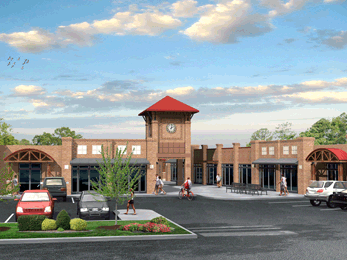
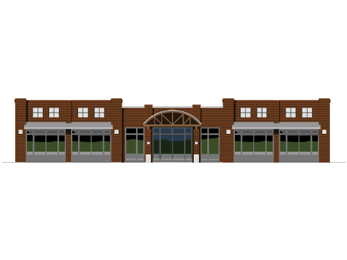
Newhall Crossing
Peabody MA
How do you design a “strip mall” compatible with its surrounding neighborhood? This was the challenge Deer Hill Architects undertook with the design of 40,000 square feet of retail space in Peabody. The site housed a sprawling factory complex that had been a vacant eyesore for many years.
To make these shops compatible with the surrounding area, we researched the style of the existing factory complex, as well as the major commercial architecture of Peabody; leather tanning mills. We studied the style, and determined which elements could be incorporated in a pleasing manner into the design of a retail complex. We also used a unique element of the existing factory, a rounded roof truss, as the signature element within the overall design scheme.
To top things off, we used many materials salvaged from the existing factory, including most of the brick. Since less debris had to be hauled away, and fewer new materials had to be trucked in, it reduced truck traffic through the residential neighborhood during construction. It also reduced the amount of material sent to a landfill. And of course, it tied the new building into the history of the site, as well as the history of Peabody.


















